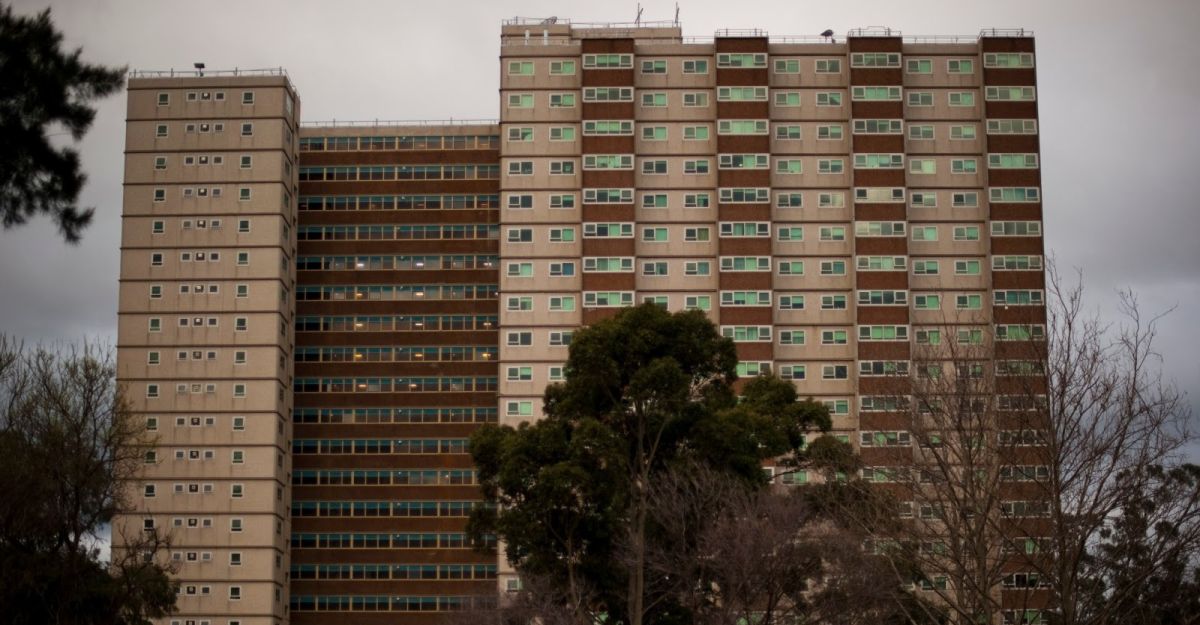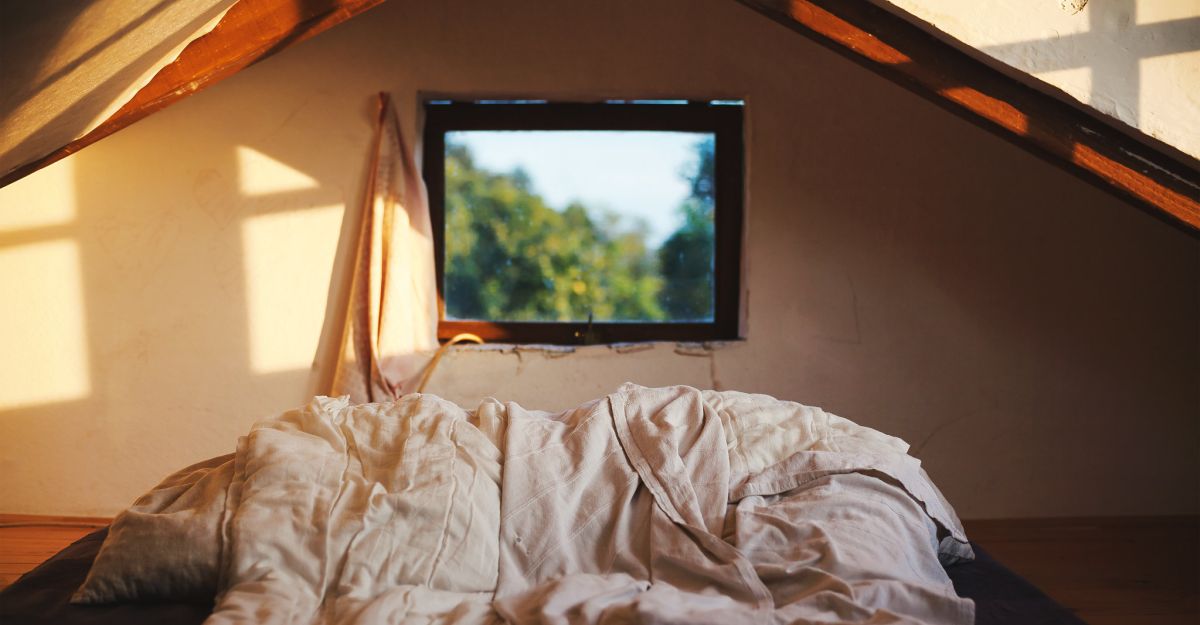The problem with feudalism is it can’t be solved with capitalism. Unlike capitalists, landlords don’t offer wages to the tenants they exploit to extract rents. Landlords—as is written in their title—are feudalists whose core business is expanding and conserving rental serfdom.
An incoherent mishmash of liberal and conservative values, the current Labor government has adopted a stock market roulette-approach to mitigating the housing crisis, but is in for a rude shock if it thinks it can capitalism its way out of a problem of feudalism. Its proposed Housing Australia Future Fund (HAFF) is an investment scheme wherein the government throws $500 million a year at unnamed stock in the limp hope that its investments will appreciate, resulting in a return of billions of dollars to build a meagre 30,000 dwellings. However, the government’s proposed legislation does not contain a guarantee that any homes will be built at all, meaning that not only is Labor’s plan contingent on future stock appreciating, but it also doesn’t have to build anything at all, should its investments tank. The plan also falls well short of the 750,000 public homes currently required to so much as touch the sides of mitigating the supply side of the housing crisis.
So why won’t Labor simply build homes, rather than gambling the tax revenue that is produced by our labour? What will they gamble on anyway?
Whatever the HAFF roulette table looks like, its design is borne of the highest levels of neoliberal grubbery and political flaccidity. Cynically, Labor is using the HAFF to evade criticism from its opponents further to the right. In budget terms, the HAFF is filed under ‘investment’ rather than a line item ‘expense’, which helps Labor counter the tired (and baseless) charge it has always copped from the Liberal Party of being reckless big spenders. Labor in government has perfumed itself with nauseating corporate jargon, spraying around ‘wellbeing budgets’ and ‘values-based capitalism’ in a cosmetic attempt to mask the putrid stench of its conservative agenda wherein its central plan for dealing with an oversupply of landlords and an undersupply of affordable housing is to enrich private multinational tax dodgers through the stock market in the unsubstantiated hope that a return will magically trickle down. Tell that to renters who year-on-year watch more and more of their wages disappear to price-gouging landlords. It is important to remember that the Albanese government’s arrogance is also an extension of its electoral desperation—a desire to appear to be tackling the very real problem of affordable housing and rip-off rents while actually conserving the interests of landlords (a central feature of Labor’s conservatism) so as to appease their base, which is no longer the working-class, but the asset class.
This is of course the track of a party who deified Bob Hawke, a Labor prime minister and CIA asset who snitched to the US on the (actual) labour movement in Australia. This is a party who today in government have chosen to keep Jobseeker payments well below the Henderson poverty line despite recommendations from its own experts to raise it to 90 per cent of the age pension, which, according to relative analysis by the ABC, would restore the unemployment payment to where it was in the late-twentieth century. This is a party that has boasted about a $20 billion surplus, beat its chest over spending $368 billion on submarines while charging taxpayers $4.1 billion to build bomb factories, and bragged about its commitment to gifting rich people an extra $9000 in their tax returns—a tax cut that will come at a $313 billion cost to taxpayers and even greater cost to those accessing welfare whose starvation payments have been characterised by Labor as necessary to pay for the aforementioned submarines, bombs, and moneybags for the upper classes.
Broadly speaking, late-stage feudalism’s transition to capitalism was precipitated by the enclosure movement, the industrial revolution, and free-market capitalist economies spawned by the colonial conditions of imperialist projects. However, much of feudalism’s componentry remained—not as a residue or vestigial husk, but as the bedrock for sustaining the class-system required for capitalism to function as it does today.
One of these feudalist features that survives to the current day is landlordship. In ‘Autoenshittification’, Cory Doctorow uses the example of how the business model of car manufacturers has changed from a capitalist one—building and selling cars by exploiting workers—to a feudalist one in which their core business revolves around offering a diversity of ‘rents’, chief of which is offering subprime loans for vehicles that extract data from drivers, which it then uses to sell subscription services or ‘add-ons’ back to borrowers. Doctorow points to the example of BMW and Mercedes offering borrowers the opportunity to rent the seat warmers and ‘fully functional acceleration curve’ already built into their vehicles.
Housing has always existed as a feudal enterprise, since landlords do not own any means of production that create commodities by exploiting the labour of workers. Capitalism retained the feudal structure of landlordism as a containment measure for controlling the working classes. It positions landlordism as a containment measure and employment as a means for renters to overcome their own containment. Neoliberal and neofeudal social orders assign personal failure to individuals who do not overcome this containment and in doing so conceal structural inequalities.
Another byproduct of neoliberal and neofeudal ideology is a culture that believes the exploitation of tenants is not only acceptable but a reward deserving only of the ‘worthy’. If we’re not careful, it is an ideology potent enough to bring Thatcher and Reagan back from hell.
Landlords are merely required to own shelters and to rent them out. In order to succeed, landlords don’t need to make or sell things like a capitalist, but rather they need only maintain housing scarcity, which is why the Labor government—whose MPs are themselves landlords multiple times over—has no desire to freeze or cap rents. There already exists an abundant supply of homes: the problem is the oversupply of landlords who hoard them.
The Greens (a centre-left party on a good day) have blocked Labor’s HAFF in the Senate, demanding amendments that would seek to mitigate the unrelenting rise of unlimited rent increases by introducing rent freezes and caps. These are sensible, moderate suggestions and Labor’s sustained hissy fit over them is telling. Rent freezes and rent caps make sense but will do very little to address the problem at the heart of the housing crisis, which is scarcity driven by an oversaturation of landlords. 30,000 homes would look like a better number if supply was also being freed up by addressing the landlord problem.
There exists no sound reason why anyone should own any other property except for the one they need to live in to survive. Much has been written about how the Australian government bankrolled building an abundance of new housing following WWII for fear of an organised uprising against the asset class, but the current Labor government appears to fear nothing of the sort. And why would they, when a central tenet of both Labor and Liberal ideology is the fetishisation of private property and so-called ‘aspiration’. The government should be grateful they are being made to deal with centrist proposals from the Greens and not an organised uprising from renters and workers demanding housing justice.
*
So, what is the answer? A suite of moderate solutions could include: immediate rental freezes and caps, vacancy tax, eviction bans, the introduction of multi-year leases, direct spending on building universal public housing, making Airbnb and Airbnb-style letting illegal, and the abolition of schemes that incentivise landlordism, such as negative gearing. The government could also purchase supply by offering landlords incentives to sell, such as reducing or waiving capital gains tax on properties sold to the government. Public ownership of new and existing housing will also ward off predatory vulture/cuckoo funds who—as demonstrated in Ireland—swoop in and buy up supply and then rent it out as a company-landlord rather than an individual-landlord. The government could also adopt a mixed-model, partially borrowed from the Dutch, in which maximum rents are subject to caps and determined by a points-based system linked to housing quality and home improvements. In Australia, rent increases do not match improvements made to a property’s quality, but instead reflect a market inflated by a supply strangulated by an oversaturation of idle landlords. The only feature of a rented home that matches the magnitude of rental increases is the spread of mould. As dwelling deterioration is accelerated by the rapidly changing climate and intensifying landlordism continues to shrink housing supply, landlords find it more profitable to evict a tenant and replace them with one more willing to endure dilapidation than to perform basic maintenance work. If the Labor government was at all serious about addressing the rental crisis, policy would be built around the aim of disincentivising landlordism and decommodifying the bulk of pre-existing private dwellings by any means at its disposal.
In the Netherlands, rent controls have seen the introduction of rent ceilings, liberalised tenancy agreements, and rental caps determined by inflation and wage growth: ‘the maximum rent increase is inflation +1%, or (as of 2023) wage growth +1% when wage growth is lower than inflation.’ In 2023, all rental increases in the Netherlands were capped at 4.1%. This pales in comparison to Australia’s landscape of unregulated and unlimited rent increases, which in 2022 saw weekly rents increase by as much as 47 per cent.
In Ireland, unions like Unite have pinpointed a problem of government which parallels the Albanese’s housing policy in Australia:
Government policy is designed not to resolve the housing emergency but instead keep the overwhelming majority of residential property in the private sector whilst driving up land value, house prices and rents, thus delivering asset price inflation and a lucrative, state subsidised income to developers, landlords and international capital.
Labor’s HAFF not only does exactly nothing to reduce rents—it also wraps the tax revenue produced by our labour in a ribbon and gifts it as an income stream to international capital.
As well as significantly increasing the supply of public housing as a first priority, the government could also make plans to universalise the new housing it builds and the supply it buys back in a decommodification scheme. Universal housing would offer rented homes to anyone, and maximum rents could be determined by a housing quality points-system coupled with a wage growth/inflation calculation regulated by a rent ceiling. Rent revenue could then be used to maintain and improve housing as well as fund future building works. An example of such a scheme has found success in Vienna.
A housing policy that does not explicitly seek to abolish private landlordship or at least make it exceptionally rare is not a serious policy. Property values and rents increase when homelessness and housing precarity increase, and they keep going up, exposing the full moral and political decrepitude of the current system, leading one to think: where is the ceiling? What is at the end of the trajectory we are currently on? The problem and its solutions are not complicated. Housing justice only becomes complicated when those presiding over and benefiting from the crisis refuse to fathom that any move to increase supply must be complemented by policy that actively impedes the viability of landlordism and decommodifies existing properties.
Image by Etienne Girardet



